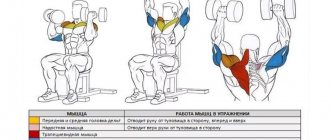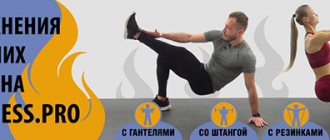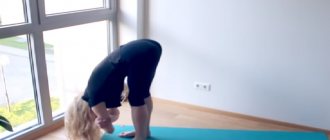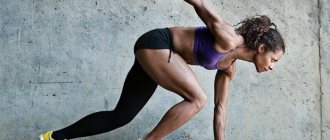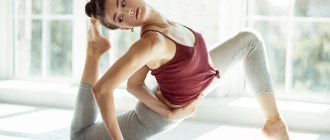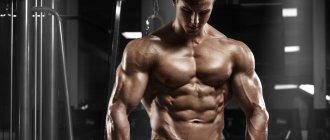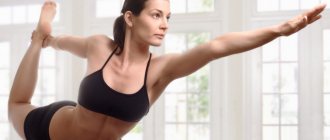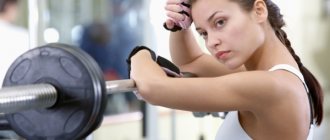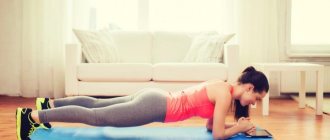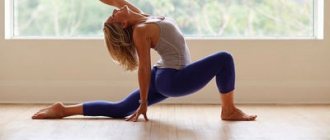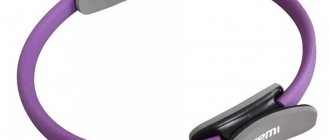Yoga in hammocks was developed in the USA and includes a set of effective exercises to stabilize the body, relieve tension, improve blood circulation, restore metabolic processes and rejuvenate. Yoga techniques are divided into 3 subtypes (classical aerial yoga, fly yoga, anti-gravity Pilates). It is necessary to master a set of exercises step by step, taking into account the recommendations of specialists and health restrictions.
What's special?
Yoga in the air on ribbons and canvases was invented by choreographer K. Harrison. A hammock was included by a specialist in a set of exercises, then the Fly Yoga system was formed. Complex asanas are performed in a suspended position.
Supporting sheets are made from durable fabrics that can withstand weights of up to 160-200 kg. Hammocks are suspended from the ceiling on ropes. The canvases are a supporting device and relieve stress, reducing tension in the spine when performing techniques. Hammocks allow beginners to perform complex elements (headstands, stretches) in their first lessons.
In addition to classical yoga, the complex includes exercises from Pilates, acrobatic and health-improving gymnastics. More than 3,000 positions and asanas have been adapted for execution on canvases. Exercises can be complicated for experienced athletes or simplified. The techniques can be combined with other types of sports exercises. The disadvantage of yoga on canvases is the need for special equipment; without training, the technique is difficult to perform at home. At the initial stage, instruction from experienced trainers is required.
The techniques are suitable for different age categories (both for children 7-8 years old and for pensioners). In this case, the loads must be adjusted in accordance with the characteristics of the body and the level of preparedness. Older people should master the techniques gradually and with little effort. Classes for children are held in special groups; exercises help improve the growth process, straighten posture, and stabilize hormonal levels.
In the absence of contraindications, the exercises can be performed by pregnant women during short periods. Special techniques allow you to train muscles, improve the functioning of blood vessels and lungs. The canvases in the group are placed below the standard position above the floor. The load falls on the legs and arms, the abdominal area is relaxed. Stretching the hip muscles improves fetal development. A set of exercises helps reduce stress on the legs.
Classes for adults differ in the intensity of exercises in accordance with the level of training. Some combinations include cardio exercises, complex asanas that require extensive yoga experience. Exercises are useful for people suffering from vegetative-vascular disease, working at a computer, or leading a sedentary lifestyle. Recommended techniques during the recovery period after illness and surgery.
Anti-stress asanas: learn to relax!
A set of four exercises will help restore mental balance and clear your mind of disturbing thoughts and worries. Exercise for 15-20 minutes in the morning and before bed.
- Baddha Konasana (butterfly). Sit on the mat, bend your knees, bring your feet together in front of you, with your heels flat on the floor. Grab your feet and pull them as close to your groin as possible, then begin to lower your hips to the floor and reach up with the top of your head. Now inhale, exhaling, gently lean forward, try to touch the floor with your forehead, and then your chin. Freeze in this position for a minute, breathe evenly and deeply; at the end of the asana, release your feet, straighten your legs and relax. Beginners are advised to learn butterfly pose with their backs against a wall and folded towels placed under their knees.
- Balasana (child). Sit on your heels with your hips, lower your head to the floor, arms straight in front of you or behind you. Breathing deeply through the nose, muscles completely relaxed. Perform 2-4 inhale-exhale cycles, lift your torso, rest for a few seconds and repeat.
- Pavana Muktasana. Lie on your back, legs together, arms along your body, palms down. Rest your tailbone, shoulders and neck on the floor. Pull your knees, clasp them so that your thighs press on your stomach, breathe slowly, releasing air through clenched teeth (“Pha”!). Raise your head and pull it towards your knees, stretching the muscles of your lower back and legs. Take 8 inhale-exhale cycles, only after that lower your legs to the floor.
- The class ends with shavasana, a relaxation pose. You need to exercise in the fresh air or in a ventilated room, on an empty stomach or two or three hours after eating.
The benefits of aerial yoga
The advantages of regular classes in a new direction of yoga:
- straightening and healing the spine, aligning posture;
- increasing the safety of performing stretching exercises;
- reducing tension in the neck, lower back, pelvic area, back;
- increasing muscle elasticity;
- giving the body plasticity;
- improving blood circulation in the brain, increasing concentration, improving memory;
- stabilization of metabolic processes, removal of toxic substances;
- harmonization of the nervous system, relieving symptoms of stress, stabilizing sleep;
- developing a sense of balance, improving body control skills when performing complex exercises;
- improving blood circulation, stabilizing the cardiovascular system;
- harmonization of the digestive system;
- slowing down the aging process of the body;
- development of body plasticity and flexibility;
- elimination of painful sensations in the back, neck, lower back;
- strengthening body muscles, increasing body tone;
- development of endurance, strengthening of the muscular frame;
- harmonization of mood, creation of a positive attitude;
- improvement of complexion, cell renewal, body rejuvenation;
- stabilization of hormonal levels;
- increased joint mobility;
- stabilization of the vestibular apparatus;
- reduced load on the legs, no risk of developing varicose veins;
- weight loss.
The advantage of this sport is the presence of special turns (decompression), which are done upside down. When hanging in asanas, the spinal column is stretched and lengthened, tension and pain in the back and lower back go away.
The mobility of the spinal discs is restored and posture is straightened. By improving blood circulation, performance improves, the body is cleansed of waste and toxins, cells are renewed and saturated with useful microelements.
Inversions in acroyoga help reduce swelling. By regularly performing inverted asanas, cell renewal processes in the body are accelerated. Additionally, posture is leveled, so height can increase by 1-1.5 cm. Students learn the skills of feeling the body and maintaining balance in complex asanas.
A set of exercises on canvases is suitable for weight loss programs. The techniques help stabilize metabolic processes in the body, speed up metabolism and increase the rate of calorie burning. The average calorie reduction per 1 hour of exercise is 600-650 kcal. The process of burning fat deposits, which begins during training, continues for 24 hours. By adjusting your diet and eliminating high-calorie foods and reducing the amount of carbohydrates in your daily diet, rapid weight loss is possible.
Changes in the body when doing yoga in a hammock
Choosing to practice yoga in hammocks means in a relatively short time to achieve:
- improving posture and stretching the spine (and stretching occurs effortlessly, naturally, under the influence of gravity);
- increasing overall joint mobility;
- relieving tension in the hip area, lumbar region, spinal and neck muscles;
- increased elasticity of muscle tissue and tendons;
- stabilization of metabolism and blood circulation, improvement of oxygen supply to the brain and, as a result, good memory and concentration;
- normalization of digestive processes;
- making insomnia, stress, and frequent nervous tension a thing of the past;
- increasing general tone;
- lightness in the body and improved controllability.
In addition, positive changes occur in the emotional state - even changing the way of thinking.
Contraindications
Contraindications for practicing on canvases include damage to the musculoskeletal system and the recovery period after surgery. In some cases, exercises are contraindicated during pregnancy (long term), changes in blood pressure (low, high), and within 4-5 days after Botox injections. Exercises are not recommended for overwork, colds, or fever.
To perform inverted asanas, you need to wait 3 hours after eating. Avoid training during periods of menstruation. If dizziness, nausea, rapid heartbeat, or arrhythmia occur, continuing to exercise may be harmful.
In addition to temporary restrictions, it is prohibited to perform exercises for the following diseases:
- phlebeurysm;
- thrombophlebitis;
- weakened blood vessels of the eyeball;
- brain thrombosis;
- hypertension;
- atherosclerosis;
- heavy physical labor before training;
- disruptions in the hormonal system (thyroid disease);
- vertebral displacement;
- glaucoma;
- diseases of the circulatory system and heart;
- presence of spinal and cervical injuries;
- intervertebral hernia.
Experts recommend that if you have health problems, undergo an examination and receive recommendations from your doctor to prevent possible injuries. In case of exacerbation of diseases, it is important to cancel exercises; techniques are not performed when taking a large number of medications in the postoperative period, or when restoring the body after injuries. Classes take place 6-8 hours before going to the sauna; you need to wait 4 hours after the steam room before training.
Basic Rules
You cannot do dynamic yoga on a full stomach. This can lead to unpleasant consequences. It is better to wait two to three hours after eating before starting to do dynamic yoga routines.
You need to choose a time on the day when no one will interrupt or distract you: during classes you need to fully concentrate on the practice of asanas.
It's important to feel comfortable. Clothes worn when practicing dynamic yoga should “breathe” and not restrict movement. A cotton set is best suited for this.
It is advisable to practice in a quiet, clean, warm environment. Wooden floors are ideal for this. However, if its surface is slippery, it is advisable to use a gymnastic mat.
How is the lesson going?
A standard lesson for beginners takes 1-1.5 hours. For training, you need clothing that fits close to the body and does not restrict movement. It is optimal to wear leggings and a top made of elastic fabric. No shoes are required when performing the exercises. Long curls must be removed with a hairpin. Jewelry is removed before classes to safely perform the techniques.
The load for students is selected by a specialist, taking into account the characteristics of physical fitness and health status. The specialist prepares a hammock to suit the students’ parameters. It is necessary to warm up the body, adjust breathing, and consistently increase the load on muscles and joints. Head turns and body bends are optimal.
Exercises on canvases begin with simple asanas on the floor. The weight is then transferred to the hammock. In a series of simple techniques, you can touch the floor with your foot. Then the body is lifted from the surface and asanas are performed only in the air.
It is recommended to start with small turns, limiting the time spent upside down. The complexity of the exercises and the duration of the training are consistently increasing. To get the effect of training, it is important to relax the body in asanas. After completing the main part of the training, relaxation techniques and breathing stabilization are performed. The class ends with the “Shavasana” pose.
Advanced yoga poses
To complicate yoga poses, there are additional techniques that allow you to get more effect from different asanas:
- Perform six lunges on both legs.
- Take a position sitting on your tailbone, while holding your ankles with your fingers. Start rolling on your spine back and forth.
- Take a standing position, raise your hands up and clasp your fingers. Stretch your spine up and perform a series of side bends.
Varieties of aerial yoga
3 types of yoga in hammocks have been developed:
- classical exercises;
- fly yoga to restore the body;
- anti-gravity yoga.
The classical direction combines exercises from aerial gymnastics and yoga. Asanas, relaxation techniques, and the body’s mood for relaxation or concentration are used. With regular exercise, the functioning of the nervous system is stabilized and the body's endurance increases.
The anti-gravity direction combines Pilates and aerial yoga techniques. The techniques will help students strengthen and form a beautiful muscle profile, straighten and improve the spine, give grace to the figure, and reduce excess weight. A type of acroyoga helps improve stretching, increase body flexibility, tone muscles, and strengthen the body. Special techniques help develop a sense of balance, relax, and reduce tension in the body. After classes there is no feeling of fatigue, because the complex is built by combining loads and relaxation.
The restorative set of exercises on canvases (fly yoga) combines simple techniques. The direction is based on stretching that has a positive effect on the hip joints, spinal column, and connective tissues.
The complex is often recommended if there are restrictions for intense training and during recovery after surgery or injury. Complex asanas are easier to perform on fixed surfaces, and the load on the body is reduced. Training allows you to increase joint mobility, perform complex stretches and even do the splits.
The techniques for performing the elements also differ depending on the type of hammocks suspended from the ceiling on ropes. There are 2 types of canvases for performing exercises in the air:
- canvas folded in 2 layers;
- hammock with additional devices (handles, inserts, stirrups for fixing hands, etc.).
Types of hammocks
To achieve the desired result, it is very important to choose the right hammock. They come in two types:
- fabric folded in two layers;
- with additional accessories such as handles, inserts and stirrups for hands.
To perform some complex asanas, auxiliary devices, as well as soft inserts that are equipped with some hammocks, will be of great help. With their help, the fabric puts less pressure on the body during training, which makes the practice even more comfortable.
Set of exercises
The lesson begins with a warm-up consisting of simple exercises:
- You need to stand on the floor, take the edges of the panels and gently sway along with the hammock, maintaining your balance.
- You need to put your foot on the canvas, the other foot should rest on the floor. In the pose you need to sway smoothly.
- You need to press your back against the hammock and, holding on with your hands, gently sway.
- A handstand is performed with the pelvic region in a fixed position in a hammock.
- Deflections on the canvas help eliminate stress on the lower back and cervical vertebrae and simplify the performance of complex techniques.
The standard exercise program for beginners includes a set of asanas such as:
- Adho Mukha Svanasana;
- Baddha konsana;
- Paschimottanasana;
- Chakrasana;
- Halasana;
- Sirsasana.
Classic pose Adho Mukha Svanasana (“downward facing dog”). A pose supported by a hammock improves blood circulation, enhances blood circulation in the brain, helps launch cell renewal processes, and evens out facial tone. The functioning of the digestive system improves, intestinal activity is normalized, and the ankle areas and other muscles are stretched.
Performing asanas on canvas differs from the classical version by the ability to stretch the spine along its entire length and reduce the load on the intervertebral discs. In the classic exercise, it is more difficult to completely straighten your back in the asana. With the help of cloths, even beginners can stretch the spine, relax the neck, and reduce the load on the cervical vertebrae.
Asana Baddha Konsana (Bound Angle Pose) has a beneficial effect on the pelvic area, lumbar region, abdomen, and genitourinary system. Regular exercise helps reduce pain during menstruation, harmonizes the functioning of the hormonal system of women, the functioning of the uterus and ovaries. The asana can be performed during pregnancy if there are no contraindications. The technique involves spreading the hips to the sides and connecting the feet. The technique allows you to gently stretch muscles and joints even without lengthy preparation, since the fabrics reduce the load.
Paschimottanasana asana is designed to gently stretch the back of the body. The technique allows you to reduce back pain, relax your neck, and straighten your back.
When performing the pose on the floor, students focus on straightening their legs. When using canvases, the legs in the asana are held in place by fastenings, so all attention is paid to straightening the back and creating the correct position of the shoulders.
Chakrasana asana is adapted for performing in the air . Exercise helps straighten your back, eliminate stoop, and strengthens the muscles of your legs and arms. Performing asana allows you to increase your energy level and increases blood flow to the cells of the body. Experts recommend starting to learn the technique after mastering simple exercises.
The legs and arms must be trained to support the body weight. The asana is not suitable for those who have problems with the lumbar region. When using a hammock, the lower back and pelvis are fixed on a plastic fabric that gently supports the back. Before performing the technique, stretching is required; the loads are increased gradually.
Asana Halasana helps to develop flexibility and plasticity of the vertebral sections, improve the functioning of the digestive organs, and balance hormonal levels. With a rush of blood to the head, brain functions are activated, concentration increases, memory improves, and the speed of thought processes increases.
However, it is necessary to master the technique on the floor gradually, since the upper spinal region is involved when performing the exercise.
Shirshasana asana (headstand) harmonizes the state of the nervous system, improves vision, concentration, and stabilizes the functioning of the digestive system. When performed regularly, the level of hemoglobin in the blood increases. It is important to take into account contraindications for performing an inverted asana. The use of the equipment is prohibited for people with heart and vascular diseases, hypertension, chronic inflammation of the ears, eyes, or displacement of the vertebrae.
It is not recommended to perform the exercise without preparation and after a long break in practice (1 year).
Complex aerial exercises must be mastered under the guidance of an experienced instructor. In the future, it is possible to independently improve the techniques.
Special circumstances
If you have any injury or illness, you should be very careful not to strain this area of the body when doing dynamic yoga. For example, if you have a neck injury, it is advisable to avoid poses that require neck strain, such as sarvangasana. They should not be attempted without the guidance of a qualified teacher. It is equally important to be careful if you have back injuries. In this case, it is best to practice with a teacher until you find appropriate exercises that can be performed based on your specific injury.
If the hamstrings are poorly stretched and it is difficult to straighten the legs, you can bend them, paying special attention to the symmetry and alignment of the limbs in each pose.
It is better not to practice dynamic yoga during pregnancy.
Reviews
Oksana, 40 years old, Moscow : “The doctor recommended doing yoga exercises in hammocks to reduce back pain. I have been training regularly with an instructor for about 1 year. The load on the spine and joints is reduced, but it is important to increase the complexity of the techniques gradually. Flexibility and plasticity have appeared; regular practices improve well-being, stabilize hormonal levels and increase the body’s resistance to disease.”
Elena, 29 years old, Krasnodar : “I’ve been doing classical yoga for about 2 years and decided to try techniques performed with the help of hammocks. The advantage of the canvas is that it stretches the spine and reduces stress on the neck. The elasticity of muscles has improved, the functioning of the nervous system has stabilized. Regular physical activity increased the plasticity of the body and helped reduce weight by 3-4 kg. I’m satisfied with the result.”
Ekaterina, 33 years old, Kaliningrad : “I work at the computer, my back gets tired. Exercises help relieve tension in the neck and back, increase the body’s endurance, and improve concentration.”
History of formation
It is quite unusual that the creation of a new direction in yoga belongs not to one of the famous Indian gurus, but to the American choreographer Harrison Christopher, a famous dance director on the famous Broadway and, moreover, a good acrobat. It was the latter fact that contributed to the maestro’s use of specially designed hammocks in his tricks.
At some point, Harrison discovered that complex and physically demanding exercises - including even hanging upside down in hammocks - did not bring extreme fatigue, but, on the contrary, unusual lightness and improved well-being. Then the idea to combine aerial acrobatics and yoga came to the founder of Fly Yoga, inspired by memories of trips to India (where he visited in the 1990s).
The result was an unusual new system in which many asanas are performed in a suspended state, and a special hammock (which is not at all difficult to hang even at home) plays the role not so much of a strength equipment, but rather a device for additional support and unloading of the spine.
Who is anti-gravity yoga suitable for?
Essentially, there are very few restrictions for practicing aerial yoga. It is excellent not only for adults, but also for pensioners, children and especially little people with such serious diagnoses as cerebral palsy. Experienced trainers take care of what exercises and levels of load to give to each type of group.
Yoga with hammocks is recommended for children because it stimulates all developmental processes in the body. For older people, it prolongs life and stops the aging process for a long time. Fly yoga greatly facilitates the physical activity of pregnant women (maintaining the tone of muscles that will need to actively “work” during childbirth, with the absolute safety of the unborn baby, ensured by a special hammock much more reliably than any exercise in the absence of such support).
The presence of support and the ability to artificially “reduce” your own weight fundamentally expands the possibilities for pregnant women to exercise. And, while their tummy “relaxes,” expectant mothers train their heart, muscles, blood vessels, take the crazy load off their legs and lower back, and at the same time stretch the muscle belt on the hips and pelvis (during childbirth, this is an important factor for their successful and easier completion).

